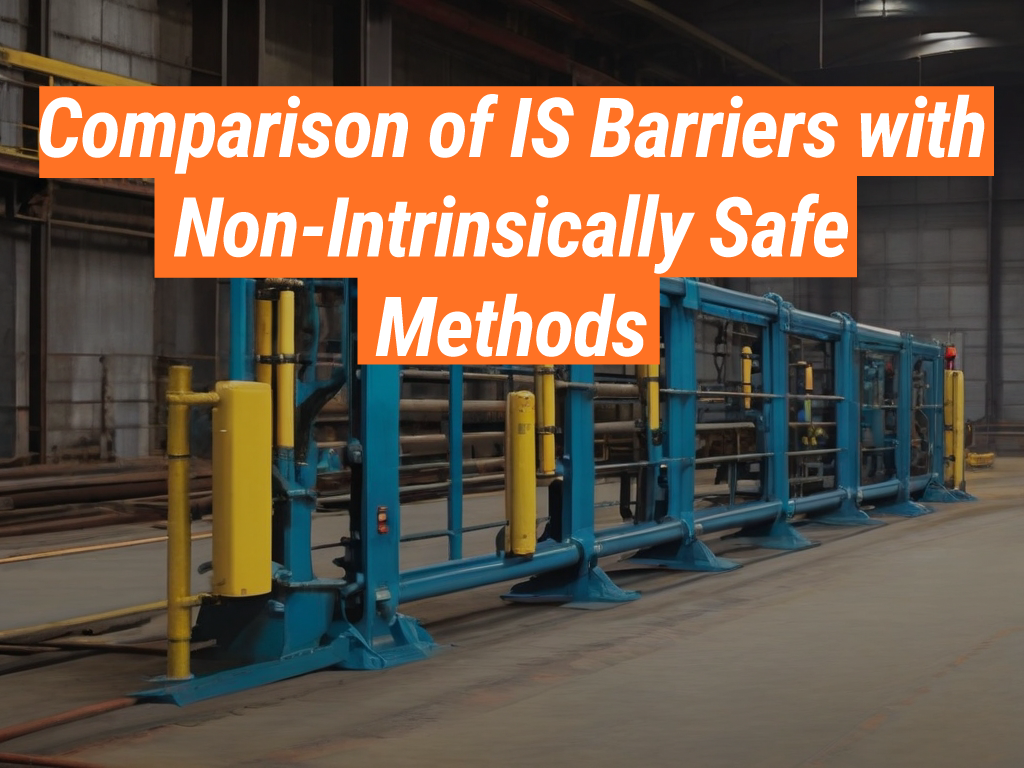Welcome to the Intrinsically Safe Store, your one-stop-shop for all things related to intrinsically safe equipment and solutions. In this blog, we will delve into the comparison of Intrinsically Safe (IS) barriers with non-intrinsically safe methods. We invite you to explore our website and discover the wide range of products and services we offer.
Understanding Intrinsically Safe (IS) Barriers
Intrinsically Safe (IS) barriers are safety devices used in hazardous areas to limit the energy (electrical and thermal) available for ignition. They are designed to prevent sparks or heat that could ignite a flammable or explosive atmosphere. IS barriers are a critical component in the design of intrinsically safe systems, which are used in industries such as oil and gas, mining, chemical processing, and more.
Non-Intrinsically Safe Methods
Non-intrinsically safe methods, on the other hand, do not limit energy to safe levels. Instead, they use other means to prevent ignition, such as purging and pressurization, encapsulation, oil immersion, or increased safety. While these methods can be effective, they often require more complex design, installation, and maintenance procedures compared to IS systems.
Comparing IS Barriers and Non-IS Methods
Safety
IS barriers are generally considered safer than non-IS methods. This is because they limit energy to levels below what is needed to ignite a hazardous atmosphere, reducing the risk of an explosion. Non-IS methods, while effective, rely on preventing ignition sources from coming into contact with the hazardous atmosphere, which can be more difficult to guarantee.
Cost
IS barriers can be more cost-effective than non-IS methods. They typically require less complex design and installation procedures, which can reduce upfront costs. Additionally, they often have lower maintenance costs due to their simpler operation.
Flexibility
IS barriers offer more flexibility than non-IS methods. They can be used in a wider range of applications and are easier to modify or expand if needed. Non-IS methods, in contrast, can be more difficult to adapt to changing needs or conditions.
Case Study: Oil and Gas Industry
A study in the oil and gas industry found that using IS barriers resulted in significant cost savings over non-IS methods. The study found that the upfront costs of IS barriers were 30% lower than non-IS methods, and the ongoing maintenance costs were 60% lower. This demonstrates the potential financial benefits of choosing IS barriers over non-IS methods.
In conclusion, while both IS barriers and non-IS methods can provide effective protection in hazardous areas, IS barriers offer several advantages. They are generally safer, more cost-effective, and more flexible than non-IS methods. Therefore, for many applications, IS barriers are the preferred choice.
At the Intrinsically Safe Store, we offer a range of IS barriers and other intrinsically safe equipment. We invite you to explore our website and discover how we can help you improve safety and efficiency in your operations. If you have any questions or need further information, please don’t hesitate to contact us.



